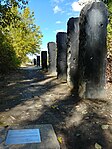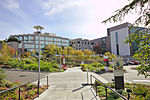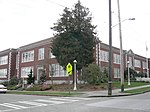National Archives at Seattle
Buildings and structures in SeattleNational Archives and Records AdministrationUse American English from March 2020Use mdy dates from March 2020

The National Archives at Seattle is a regional facility of the U.S. National Archives and Records Administration Pacific Region located in Seattle, Washington. The archives building is situated in the Windermere neighborhood of Northeast Seattle, near Magnuson Park, and holds 56,000 cubic feet (1,600 m3) of documents and artifacts. The archives opened in 1951 and moved to a permanent facility in 1963 at a renovated Navy warehouse. In 2020, the federal government approved plans to close the Seattle branch and sell the property, sparking backlash from local historians and public officials.
Excerpt from the Wikipedia article National Archives at Seattle (License: CC BY-SA 3.0, Authors, Images).National Archives at Seattle
Sand Point Way Northeast, Seattle
Geographical coordinates (GPS) Address Phone number Website Nearby Places Show on map
Geographical coordinates (GPS)
| Latitude | Longitude |
|---|---|
| N 47.673333333333 ° | E -122.2675 ° |
Address
The National Archives at Seattle
Sand Point Way Northeast 6125
98115 Seattle
Washington, United States
Open on Google Maps









